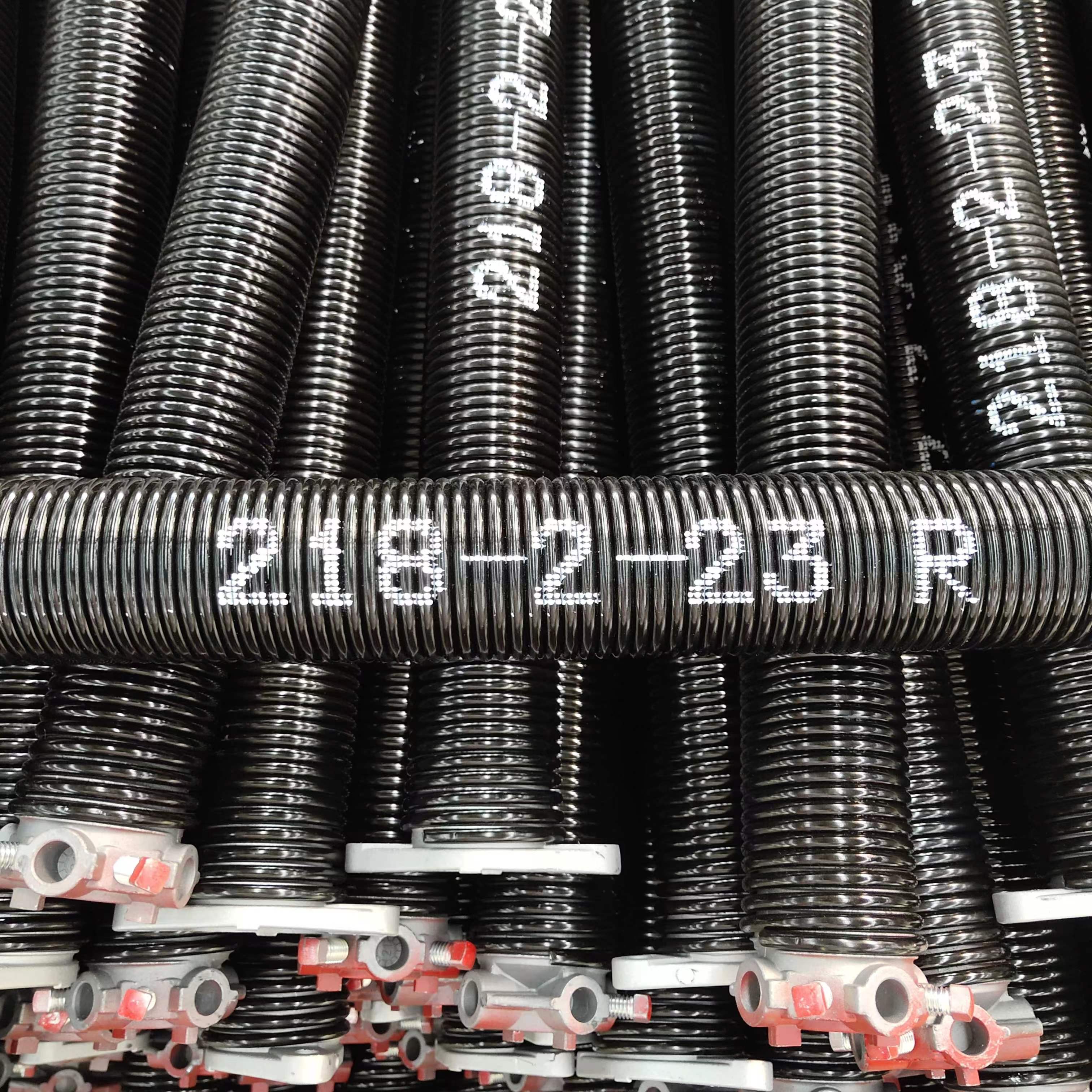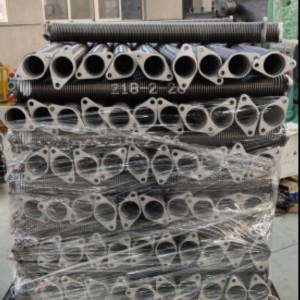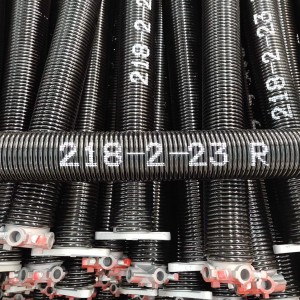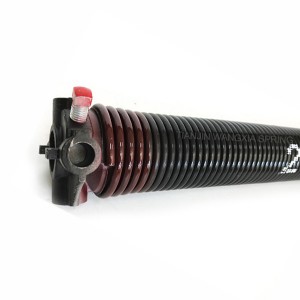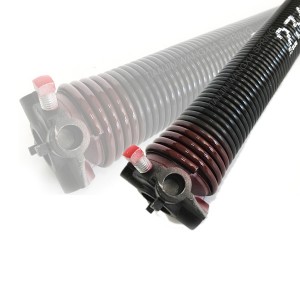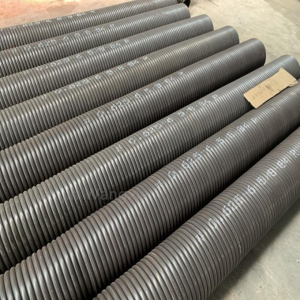218 I.D. 2″ customized lenght White torsion spring for garage door
Introduction to Standard Torsion Springs
A standard torsion spring has a stationary cone which secures the spring to the spring anchor bracket. Since this bracket is secured to the wall, the stationary cone, as its name suggests, does not move. The other end of the torsion spring has a winding cone. This winding cone is used when installing, adjusting, and uninstalling the springs. When installing the torsion spring, the coils of the spring are wound up to create a lot of torque.
This torque is then applied to the shaft, the metal tube that goes through the torsion spring. The ends of the shaft are held up by the end bearing plates. Resting against the race of the bearings are the cable drums. The cable wraps tightly around the cable drum, and the cable goes down to the bottom of the garage door, securing to the bottom bracket.
Since these cables hold the weight of the garage door, the torque from the torsion springs does not dangerously spin the shaft until the spring is loose. Instead, the garage door weight slightly exceeds the lift produced by the torsion spring(s). (The lift is the amount of weight that each spring can raise off the ground.) As a result, a properly operating garage door with the right springs should not seem to weigh nearly as much as the garage door itself. When this principle holds true through the duration of the door's travel, the door is balanced.
With the help of the torsion springs, you should be able to operate the garage door manually without much trouble. Likewise, it does not take too much work from the garage door opener to lift the garage door. As the door opens (either manually or with the opener), the torque on the shaft keeps the cable tight on the cable drum. As a result, the cable winds up on the cable drum, allowing the torsion springs to unwind.
As the torsion spring unwinds, it loses some of its torque. Therefore, it also loses the amount of lift that it can produce. Vertical lift and high lift garage doors deal with this problem in a slightly different way, and you can read about How Vertical-Lift and High-Lift Garage Doors Work. Standard lift garage doors are almost universally used in residential garages and are in the majority in commercial and industrial settings.
It all comes down to the cable drums. Standard lift cable drums have a flat portion for the cable, with one or two grooves that are a little higher. (These higher grooves are addressed in the link above.) As the garage door opens, the rollers slide along the track. The door transitions from the vertical track to the horizontal track.
When the horizontal track supports the top section, each spring does not need to support as much weight. Since the springs have unwound a little by this point, the amount of weight supported by the horizontal tracks roughly equals the lift that was lost from the decrease in torque in the torsion springs.
When the garage door is fully open, there is still about 3/4 to 1 turn still applied to each torsion spring. Since the bottom roller on the garage door typically rests on the curved portion of the track, the door will want to fall down. The extra torque in the torsion springs, though minimal in comparison to the torque when the garage door is closed, keeps the door open.
Replace Both Torsion Springs?
If you have two torsion springs on your door, you should replace both of them. Most doors have springs with the same cycle life rating. In other words, when one spring breaks, the other spring will probably break before too much longer. Since you will be going to the trouble of changing one torsion spring, it is usually better to change your second spring as well. This will save you time in the garage as well as money on the shipping costs.
Some doors, however, have two springs with different dimensions. Many times, the cycle life of the broken spring is shorter than the cycle life of the unbroken spring. This means that you may still have another couple thousand cycles left on your unbroken spring. If you only change one spring now, you will probably need to change your other spring fairly soon down the road. Therefore, we recommend that you still replace both springs, but that you purchase springs with the same length, inside diameter and wire size.
If this is the case, each of your new torsion springs will need to lift 1/2 of the total lift of your two old springs. A matched pair of springs can be determined for you by using our Unmatched Springs calculator.
One Spring or Two?
A lot of people have a garage door with only spring on it and wonder whether they should upgrade to two springs. If the new torsion spring that you will install on your door has an inside diameter (ID) of 1-3/4" and a wire size of .250 or larger, we suggest that you convert to two torsion springs. The same holds true with a 2" ID and .2625 wire size or a 2-1/4" ID and .283 wire size.
The problem with having a larger wire size on a single-spring door is that the spring pulls on the shaft as the door opens and closes. This can cause serious problems in the future, including cables breaking or peeling off the drums and steel sections getting damaged. While it usually costs $5-$10 to convert over to two springs, it can save a lot of money down the road.
One question that people frequently ask when converting to two springs is whether they need a second bearing for the second spring. The answer is no. The purpose of the bearing is to keep the stationary cone centered on the shaft so that the spring is centered on the shaft. Since the stationary cones from the two springs will be secured to each other in the process of securing the springs to the spring anchor bracket, the second spring does not need a bearing. Additionally, adding a second bearing will probably break one or both of the stationary cones.

